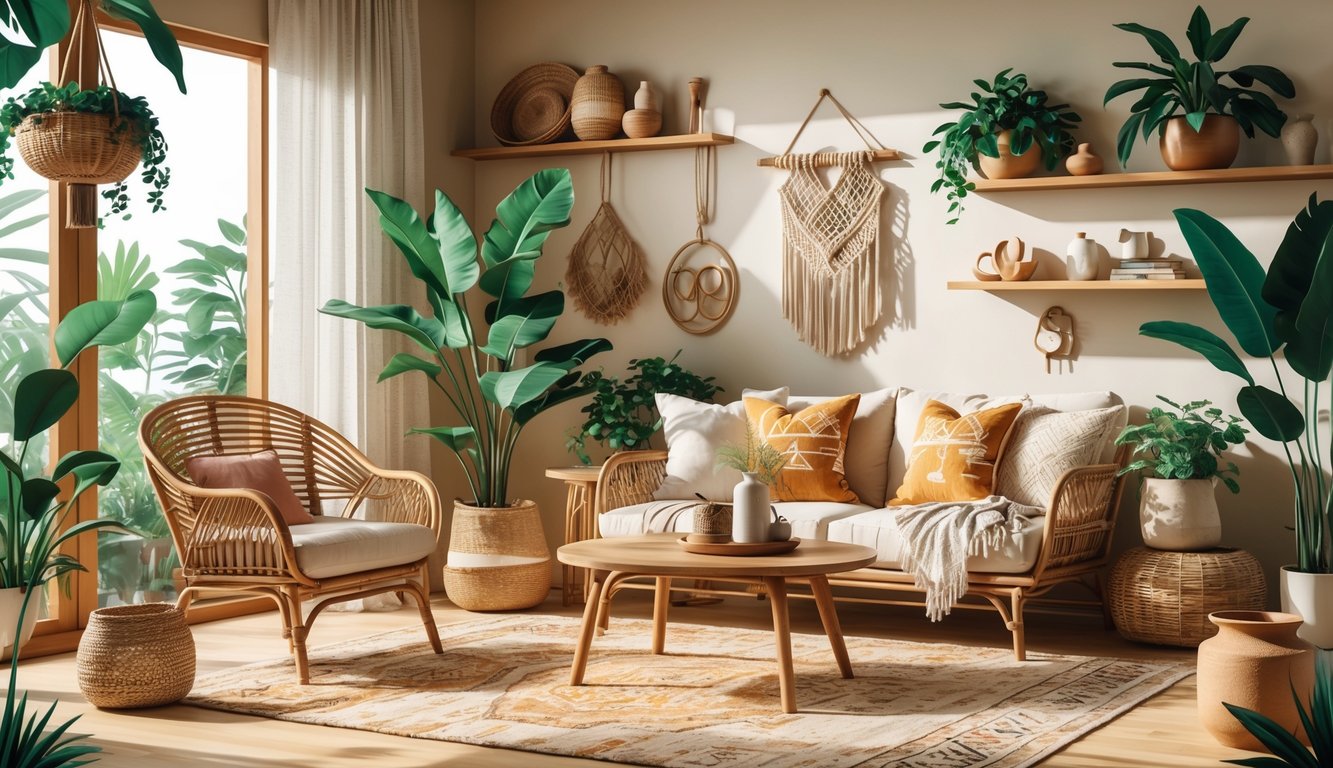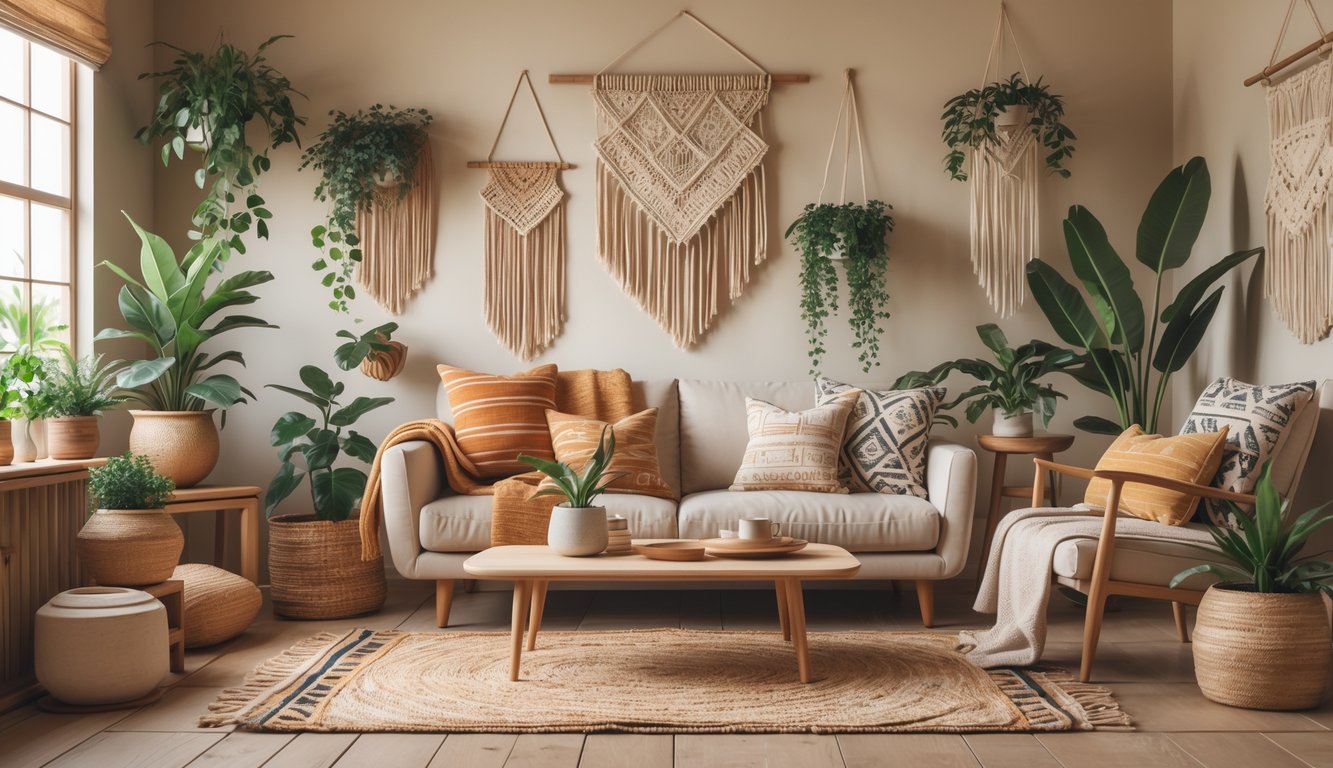
Why does everyone keep shoving random knickknacks into every corner and slapping a “boho” label on it? It’s honestly baffling—people seem convinced that “boho style” is just an excuse to pile up clutter. An interior designer once looked me dead in the eye and said, “Layering isn’t hoarding, and character beats chaos every time.” That stuck with me. Boho decor isn’t about mess or chasing whatever’s hot this week—it’s more about those handmade finds or old textiles that actually give a room some soul. I used to buy into all the myths, then I fell down a rabbit hole of expert interviews (Home Decor Bliss, you owe me hours of my life) and realized most people have it all wrong.
I still can’t believe how many folks think “bohemian” just means tossing a tie-dye blanket over a beanbag. There’s way more going on, like how a single rug can change the whole vibe, or how my grandma’s Moroccan lantern somehow fits next to those new wall sconces I splurged on. Pinterest never tells you that mixing old and new actually works—if you don’t suffocate everything with “inspo.” And don’t get me started on the “spiritual boho” stuff bloggers recycle. E-E-A-T guidelines (ugh, I know, but it matters) say expertise is about function and history, not just slapping big box macramé on every doorknob.
What Truly Defines Boho Decor
It’s hilarious—everyone’s obsessed with rattan and hammock chairs, but does anyone check if their ceiling can handle it? Boho isn’t just chaos; it’s layers and personality, not a “fun pillow” tornado. Yeah, there’s color and “freedom,” but nobody ever points out how intention makes the look—otherwise, it’s just a clearance aisle disaster.
Foundations of Bohemian Style
This myth about boho being a code word for clutter? Drives me up the wall. I’ve seen “boho chic” nurseries that look like regular nurseries with a fringe. The OG bohemians didn’t care about matching lamp sets or trends. I once asked a Parisian antique dealer about my “boho” rug, and he just grumbled about “true bohémiens” caring about stories, not stripes. Rude, but kind of fair.
If you dig into the roots, it’s all rebellion—artists, travelers, people who couldn’t care less about rules. You want a mash-up: Hungarian embroidery, beat-up leather poufs, weird paper lanterns. Every decent guide, like this Ultimate Guide to boho décor, says textures are everything. My living room? Kilim on the sofa, real plants only, and not a single fake succulent in sight. The “free but disciplined” thing is way trickier than Pinterest makes it seem.
Distinguishing Boho Decor from Decor Trends
People keep insisting that boho and farmhouse are the same thing now. Nope. Not even close. A boho style home actually feels unpredictable, with weird personality. If you see a room that looks like a catalog, it’s not boho—it’s just beige with throw blankets.
I once bought a “boho” wall art set—three nearly identical prints. Regret. Real boho interiors tell overlapping stories—Moroccan tables, Sri Lankan batik, Danish lamps—makes no sense, but it works. My favorite designer swears there’s only one rule: if you spot a trend, it’s probably not boho. That “randomness” is actually curated, and if it feels too easy, you’re missing the one battered thing that ties it together.
Myth: Boho Decor Is Just About Bright Colors

Why do people picture boho rooms as neon rainbows? That’s not it. I’ve seen rooms with just sand-colored throws, a faded olive rug, and one magenta pillow someone probably regretted. If anything, the palette is fussier than you’d expect.
Balancing Bright and Neutral Colors
Nobody ever talks about how off it looks when you dump every color you own onto one sofa. Articles say, “Layer Bohemian Design Colors,” then immediately shift to neutral walls and earthy palettes. So, are we doing bold or not? In most rooms I put together, bright colors sneak in as a pouf or a candlestand from some flea market—everything else is taupe, off-white, tan, and that random side table the landlord left.
Warm metallics or jewel tones usually show up as accents, not as giant painted walls. Instagram gets it wrong on purpose, I’m convinced. You want the vibe, not the visual noise. Neutrals calm things down, especially with layered textiles. Still skeptical? The Spruce’s guide spells out how earth tones, metallics, and family heirlooms fit together. Most people don’t plan their palette, then complain their place looks like a thrift store exploded.
Embracing Dark Colors and White Walls
People act like boho hates white paint. That’s not true at all. I’ve walked into real designer apartments where white walls are the rule, not the exception, so the art and plants actually pop. If you throw all your prints against avocado green, you’ll need aspirin.
Some of the best boho spaces use deep blue sofas, almost-black shelves, or charcoal bedding, but keep the base pale. My old mentor always said white connects the oddest things—vintage lamps, bamboo stools, whatever. Even Bobby Berk calls out how the look works: “bright colors,” sure, but always with white walls to let everything breathe (see his take). Still mad my friend painted her whole ceiling tangerine. The plants looked depressed.